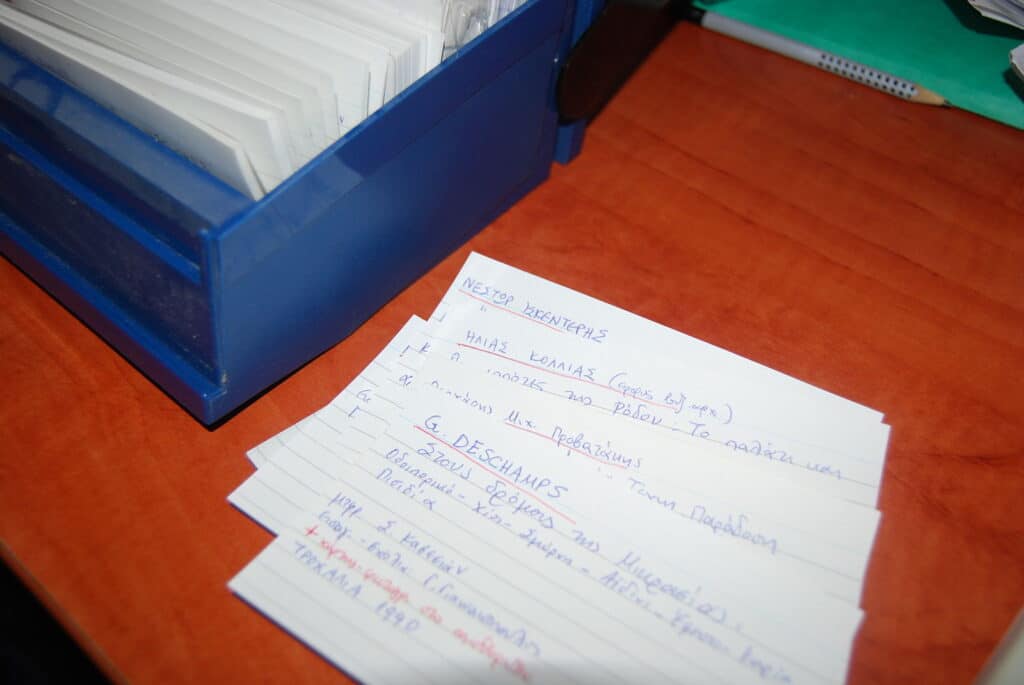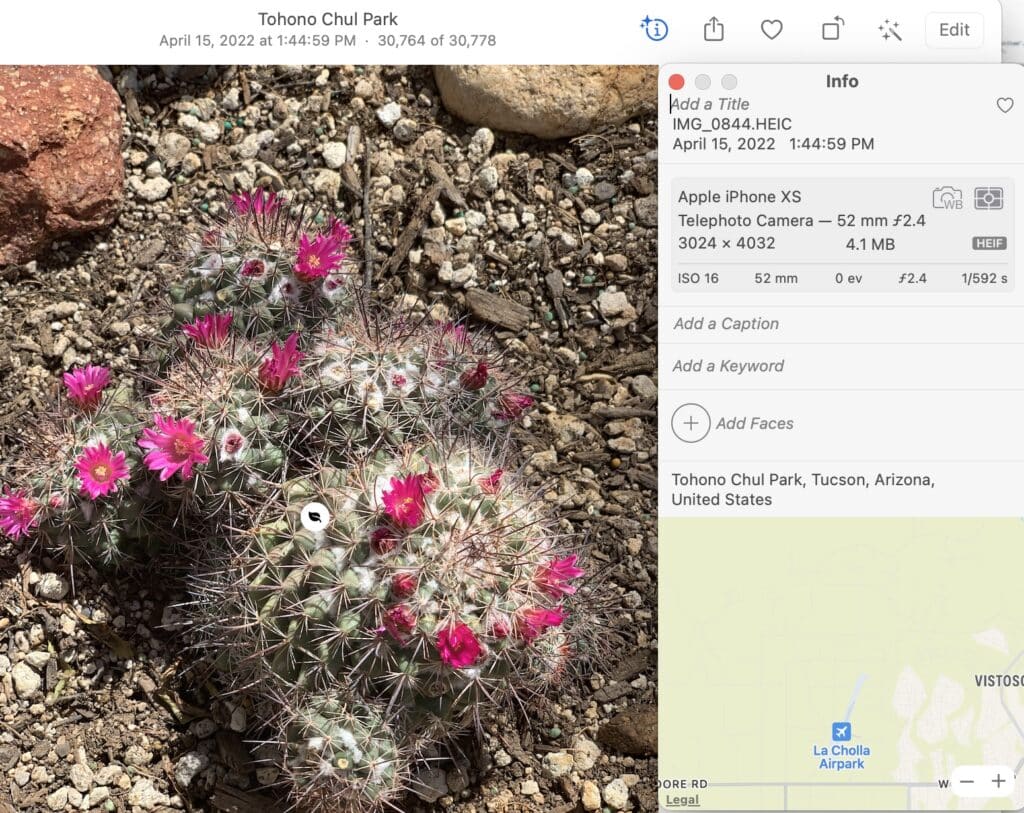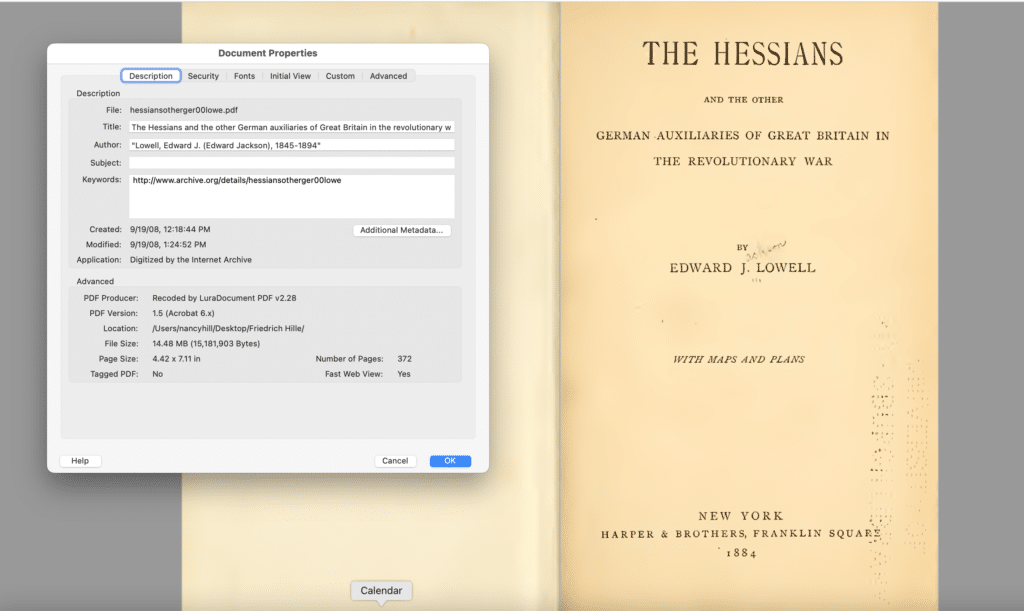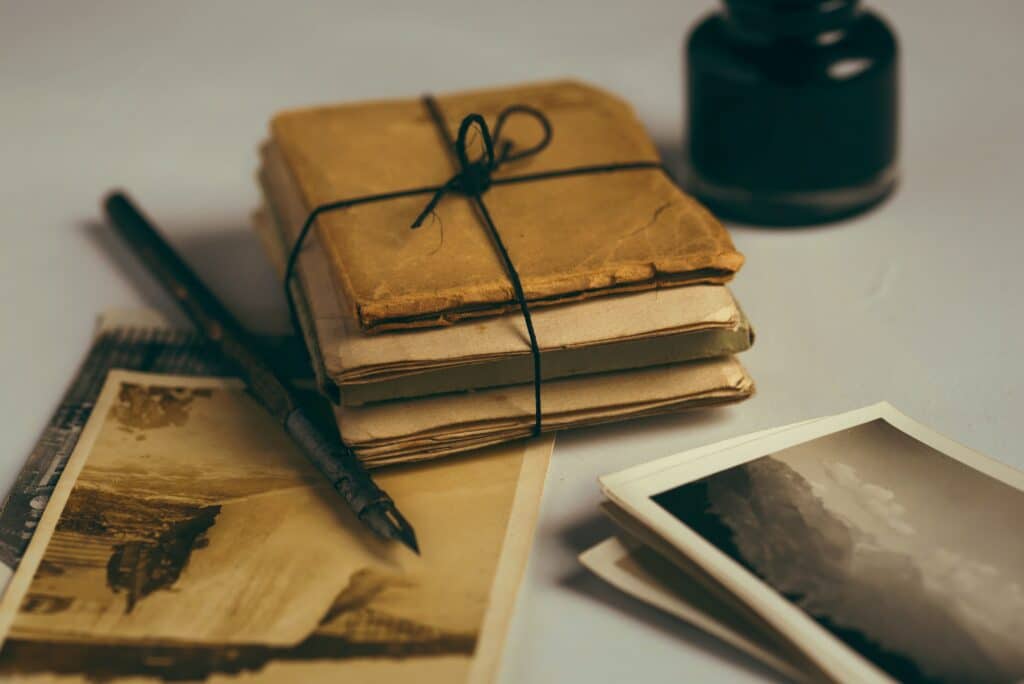
Once you start doing research, the problem of consistently referring to a single source you have consulted in your research will come up.
Many of us who do genealogical or historical research remember using index cards. Some of us use other techniques and tools to track where our information comes from.
No matter what method you use, include as much information as is reasonable. Without careful reference, we just have hearsay.
In some ways the digital advances in recording images and documents makes life easier for documenting the bare bones of information about the image or document through metadata associated with individual items. For the most part it is data that is automatically generated. The first example below is the meta associated with the photo of a pin cushion cactus I took last week. I could add more information to it if I wanted to give it a title, caption, or keyword. I retrieved this from my photo cloud (icloud) by clicking on the individual pic and and simply clicked on the “i” at the top of the image to pull up the metadata added by the camera on my phone. Location data is quite detailed.

Metadata, and PDF, below is from my research files for my ancestor who was conscripted by his prince, transferred to the English Crown to fight in the Revolutionary war against the colonists. The metadata here is found under Document Properties in Adobe Acrobat. I have the pro version so I may be able to edit information in the metadata fields more easily than users who only have Adobe reader.

When I need to cite something from a web site I use: Cite This for Me Web Citer an extension on my Chrome Browser. I use the free version.
If I am writing a document I put in info from Cite This for Me Web Citer into a comment so I know where the info came from even what I am writing does not require references. It makes it easy to put together a bibliography too.

I create references for family documents too, such as: Unreferenced newspaper clippings from Fay Hill. Or five page genealogy collected by Maralee Watson. Some information is better than none.
Of course if you are doing genealogical work your references should include a GEDCOM file. This is the standard for genealogical data sharing. The Family Search page for GEDCOM information is the most frequently updated information these file types, This is probably the best place to get started.
This is just a sampling of the types of referencing I use. I cannot imagine not having some way of tracking what I know by tracking where I got the information.
A database that you create for yourself might be the way to go if you don’t like using spreadsheets. Air Table allows you to create databases if you have complicated data you want to interconnect.
It is always good to answer the question, “How do I know what I know?’ Then document it so others will be able to answer the question, “How did she know what she knew?”
Very useful info. So much has changed since I had to angst over correctly citing my sources for research papers!
I was such a nerd. I love bibliography. I worded for a prof. finding and creating refs for her.
womenslegacy recently posted…Referencing Your Research
Oh my, you made me realize how lax and behind I am in my files! I am so impressed with this post and the amount of info you entered in each example. I know it’s a necessity but boy, I feel I’ve fallen from grace!
Kudos to you, Nancy This has been a good reminder for me to learn how to keep up with the times since so much has changed over the years.
Cathy, Just remember, not everything needs referencing! Don’t freak out. You have a full plate!
Yep. My filing systems are pathetic.
So are mine. It’s a cobbler’s children problem. But I’m getting closer.